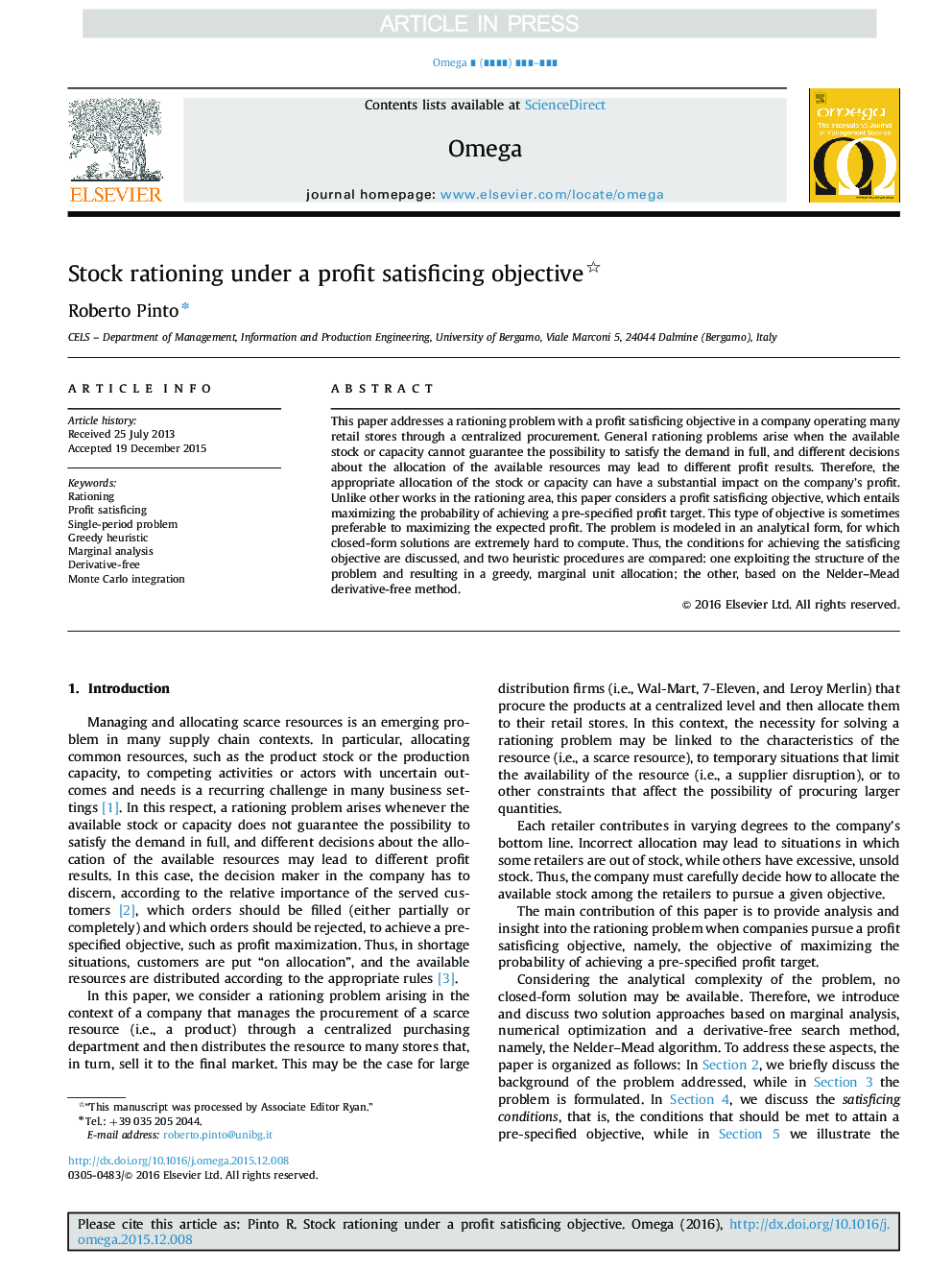| Article ID | Journal | Published Year | Pages | File Type |
|---|---|---|---|---|
| 5111804 | Omega | 2016 | 14 Pages |
Abstract
This paper addresses a rationing problem with a profit satisficing objective in a company operating many retail stores through a centralized procurement. General rationing problems arise when the available stock or capacity cannot guarantee the possibility to satisfy the demand in full, and different decisions about the allocation of the available resources may lead to different profit results. Therefore, the appropriate allocation of the stock or capacity can have a substantial impact on the company's profit. Unlike other works in the rationing area, this paper considers a profit satisficing objective, which entails maximizing the probability of achieving a pre-specified profit target. This type of objective is sometimes preferable to maximizing the expected profit. The problem is modeled in an analytical form, for which closed-form solutions are extremely hard to compute. Thus, the conditions for achieving the satisficing objective are discussed, and two heuristic procedures are compared: one exploiting the structure of the problem and resulting in a greedy, marginal unit allocation; the other, based on the Nelder-Mead derivative-free method.
Keywords
Related Topics
Social Sciences and Humanities
Business, Management and Accounting
Strategy and Management
Authors
Roberto Pinto,
